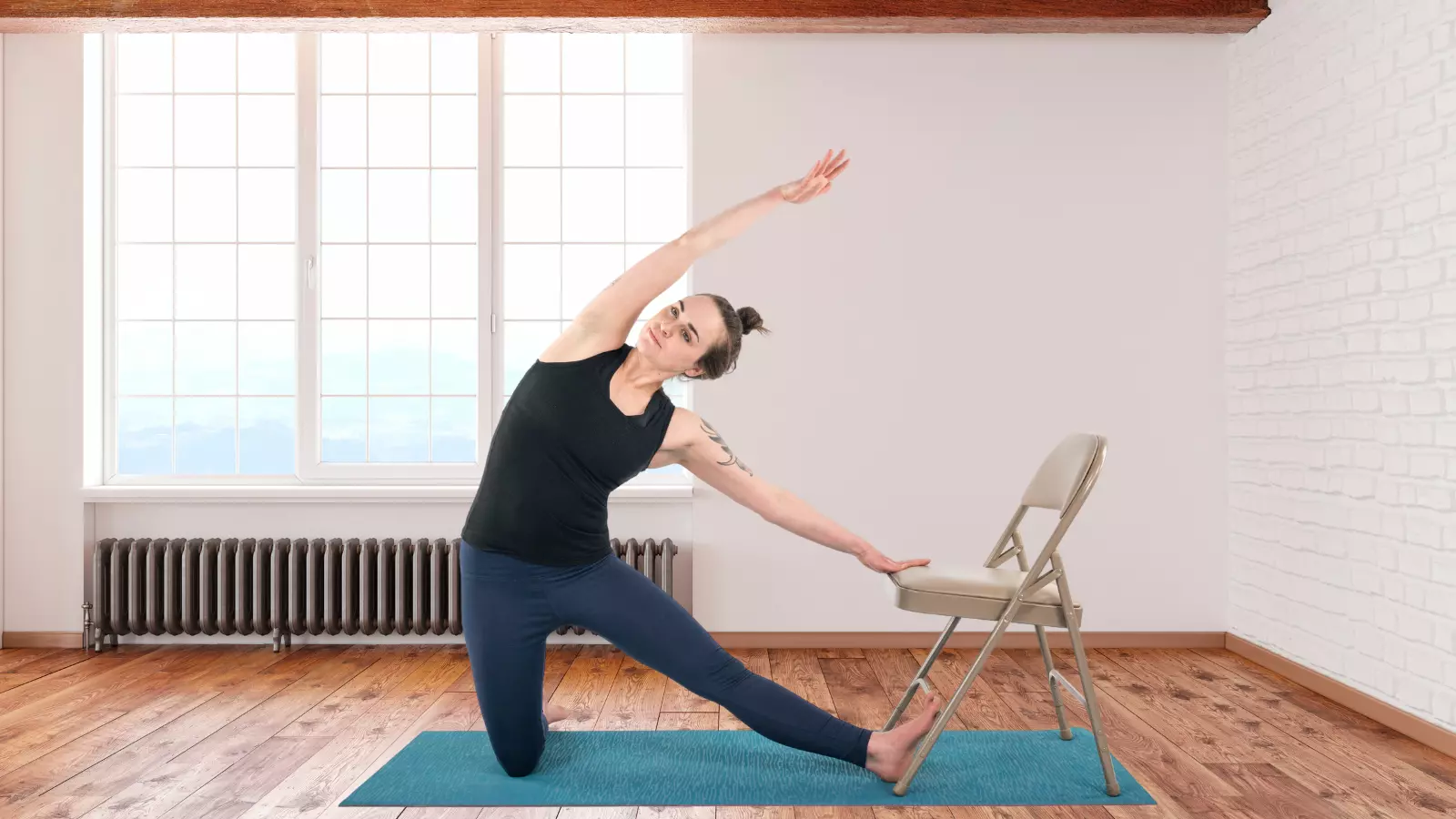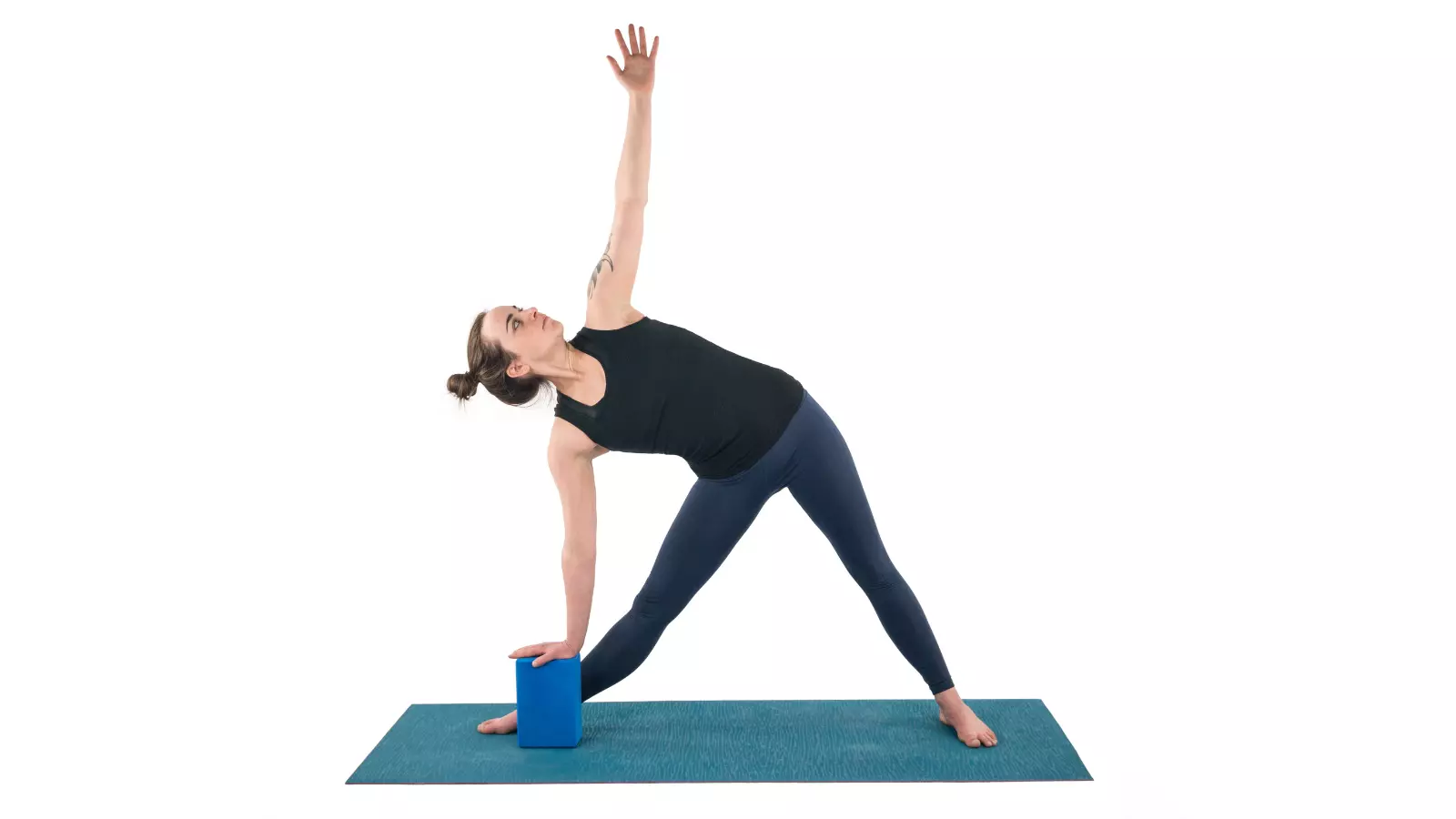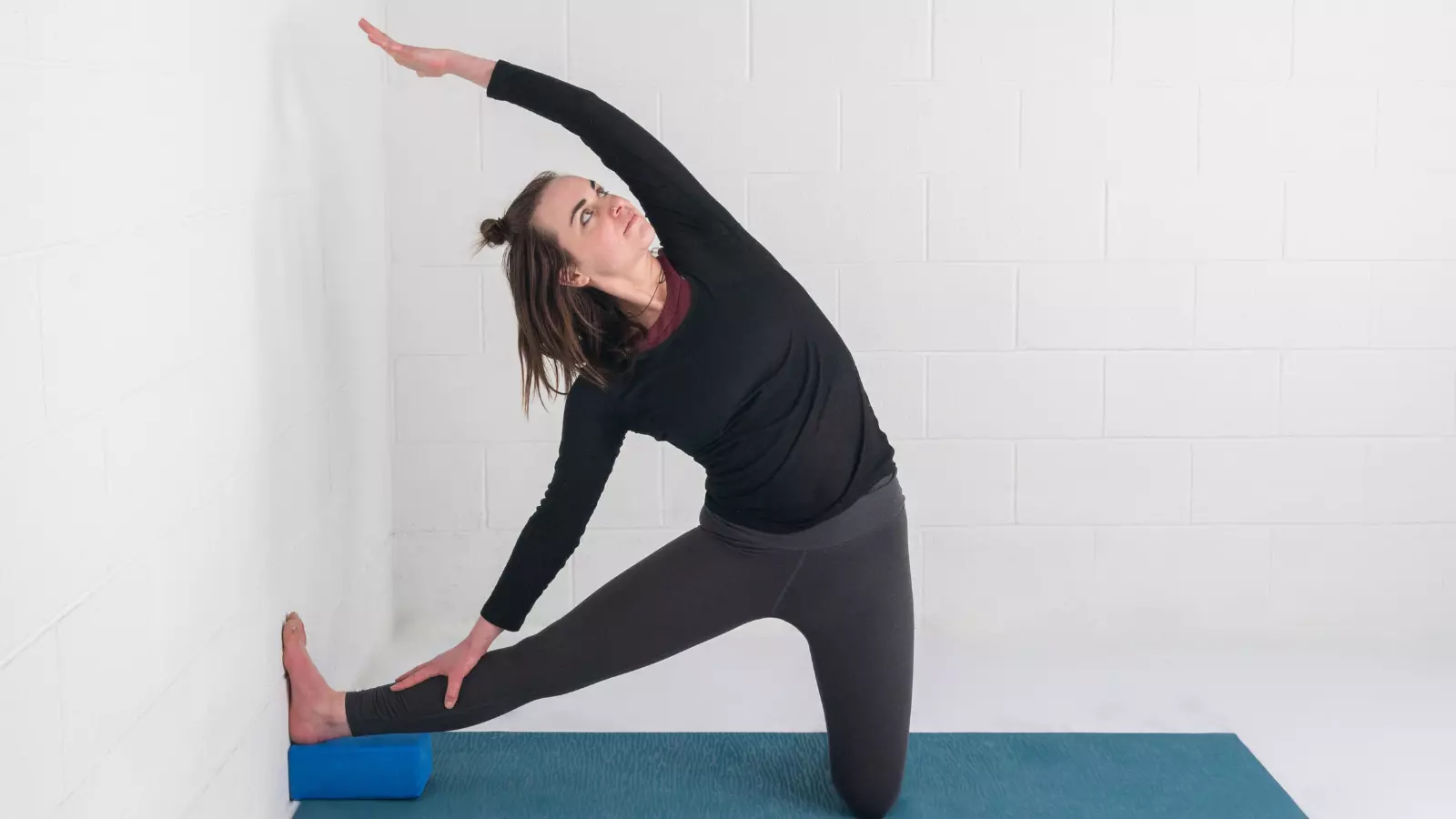How to Maximize the Benefits of Gate Pose – Includes Free Online Yoga Video!

Article At A Glance
Gate Pose is a challenging and incredibly beneficial yoga pose. By mastering the small parts of this posture, you can easily apply these same principles to more complex poses, making them much easier to practice. Here’s how. Be sure to check out our Free Online Yoga Video Tutorial as well.
Gate Pose (Parighasana) is a a foundational hatha yoga posture that is equally great for both beginning and more advanced yoga students. While simple, it is also a challenging and incredibly beneficial yoga pose.
Gate Pose incorporates many different key elements and principles of hatha yoga. By mastering the small parts of this yoga asana, you will be able to easily apply these same principles to larger, more complex poses and make them that much easier to practice.
Gate Pose is a kneeling posture is excellent for creating length on both sides of the waistline. It stretches the whole side body from the outer shin all the way up to the latissimus dorsi on the back and the triceps on the back of the arms. It also stretches and strengthens the obliques on the side body, the adductors on the inner thigh, and parts of the hamstrings on the back of the thighs. It’s a full-body posture that strengthens and lengthens so many different muscles. 
Parighasana is an excellent preparatory pose for “bigger” postures like Extended Triangle Pose (Utthita Trikonasana) because it works very similar actions in the body with less load. This makes Parhighasana really helpful for building strength, flexibility, and endurance for postures like Triangle Pose.
By mastering the fundamental principles inherent in Gate Pose, your body will learn how to position and hold itself in higher load-bearing positions, setting the stage for strength, stability, and endurance in your practice.
A Step-by-Step Guide to Practicing Gate Pose:
There is no “right” or “wrong” way to practice any posture. But specific alignment cues can help to build strength and/or flexibility in targeted muscles. This is not the only way to practice Parighasana. But it can be a really helpful, informative, and strength-building version to utilize in your practice.

- Set up your mat against a wall with the short edge of your mat touching the wall.
- Place a folded blanket about one-third of the way down your mat and a block on its medium-height setting next to the wall.
- Kneel on the blanket facing the long edge of your mat with the wall to your right.
- Extend your right leg out long toward the wall so that it angles just slightly forward of your hips.
- Actively externally rotate your right thigh so that your toes start to point upward. Draw your inner thigh toward the ceiling and your outer hip toward the ground.
- Place the ball of your right foot onto the wall.
- Ground down through your base of support by pressing firmly into your left shin.
- Lengthen your tailbone toward the mat and elongate both sides of your waistline. Envision lifting your ribcage up away from your hips.
- Hinge from your hips to lean your torso toward the wall.
- Reach your left fingertips up overhead and, if you can reach, maybe release your fingers to the wall behind you.
- Release your right hand to the block that you set up in front of your right foot.
- Press down into the block to help rotate your chest open toward the ceiling and roll your bottom rib underneath your top rib.
- Hold here for a few long, deep breaths.
- When you’re ready, root down into your foundation and integrate your core to lift your torso back up to neutral and draw your leg back toward the left so that you return to your kneeling position.
- Turn to face the opposite direction on your mat and reset your props to practice on the other side.
Important Alignment Tips to Keep in Mind when Practicing Gate Pose
- Stack your hip directly over your supporting leg.
- Avoid extending your leg back behind the line of your hips. This will rotate the pelvis significantly and alter the rest of the shape throughout your body. Even stretching the leg straight out in line with your hips is likely not an accessible shape. Instead, allow for the space needed for your bone structure by sliding your leg just slightly forward of your pelvis.
- In this variation, avoid the tendency to side bend from your waistline. Instead, side bend by hingeing your hips so that both sides of your waist can stay long in the pose, building both strength and flexibility in your side bodies.
- You can use your opposite hand for support against the wall as you lean into the side bend to help stabilize your balance as you enter the pose.
- You may wish to adjust the height of your block or where the block is placed in relation to your body so that it feels stable underneath your supporting arm.
- Press your hand into the block to help you rotate your bottom rib underneath the top rib and spiral your bottom lung open toward the long edge of your mat. Root down into your supporting knee and shin to create space to rotate open.
The Power of Simplicity in Hatha Yoga
Just because at first glance, Parighasana appears to be a simple pose. That doesn’t mean that it actually is. There are so many fundamental principles found in this “simple” posture that is imperative to yoga practice as a whole.
Don’t underestimate simplicity in your practice. It’s the summation of simple parts that creates a complex whole. So if you’re anxious to master postures like Triangle Pose or even Visvamitra’s Pose (Visvamitrasana), start working with poses like Parighasana to build the proper muscular strength and flexibility to conquer other equally powerful postures.
Free Online Yoga Video: How to Practice Gate Pose (Parighasana) at the Wall
Also, read...
4 Great Pigeon Pose Variations
Enhance Your Yoga Practice: The Many Benefits and Uses of Yoga Props
6 Yoga Poses to Counteract the Effects of Sitting
Related courses
Journey to Center: A Yoga Guide to Unlock the Full Potential of Your Core
Yoga for Healthy Hips: Principles for a Safe Practice
Need an Energy Makeover? How Yoga Can Help You Boost Vitality

Leah Sugerman is a yoga teacher, writer, and passionate world traveler. An eternally grateful student, she has trained in countless schools and traditions of the practice. She teaches a fusion of the styles she has studied with a strong emphasis on breath, alignment, and anatomical integrity. Leah teaches workshops, retreats, and trainings, both internationally and online. For more information, visit www.leahsugerman.com.


